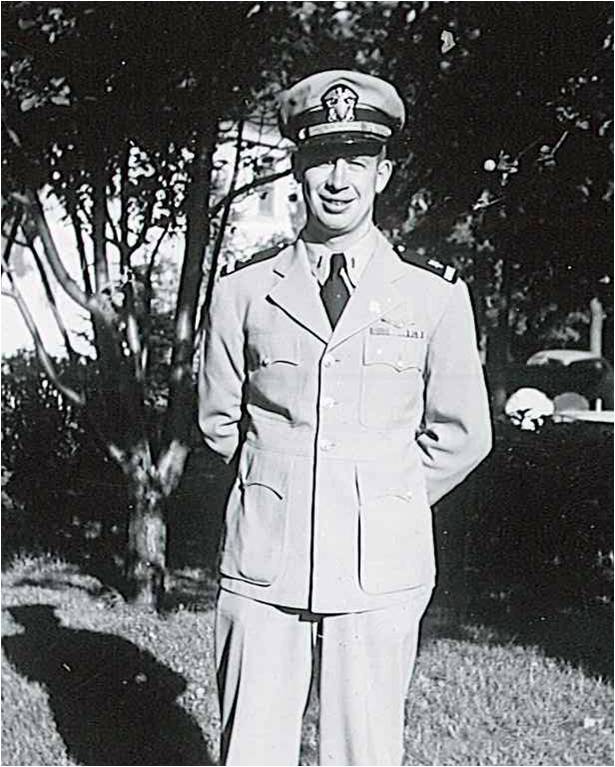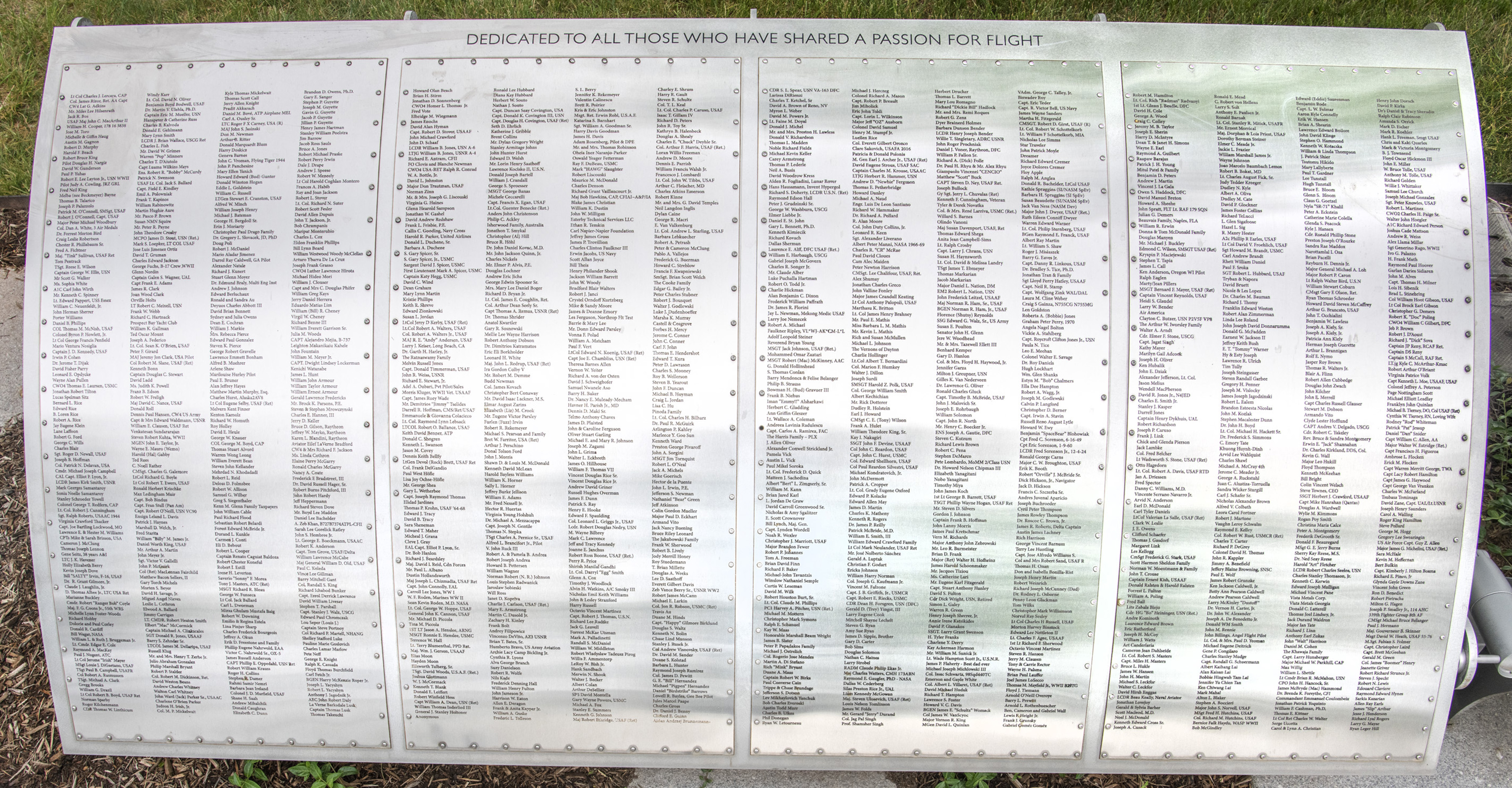
Foil: 15 Panel: 3 Column: 3 Line: 51
Wall of Honor Level: Air and Space Friend
Honored by:
Jim John Joe and Jared Greupner
Milton J Greupner, Ltjg, USN; Lt, USNR
Milt served in WWII from 1942-46 as a navigator and pilot for the United States Navy. He received the Distinguished Flying Cross and additional Air Medals. He entered the service in 1942 as a volunteer and received his navigator training at Hollywood, Florida. Upon completion of the navigators training, he joined the VB10 Bombing Squadron and was deployed to Dunkeswell, Great Britain. The squadron included fifteen PB4Y-1 Liberators which were modified B24s intended for use by the Navy for submarine hunting in the English Channel. The squadron was assigned to the British Coastal Command, taking orders directly from the command officers. During this time, flights were assigned night and day in varying quadrants of the English Channel, flying low (generally under 500 ft.) and constantly looking for German U-Boats and other enemy targets. The VB10 Bombing Squadron covered territory from northern France to southern Spain, often staying out on long hauls until fuel was expended. Between 1942 and 1944, the squadron lost nine of its fifteen planes. One plane was captured in German territory and a second crashed in Great Britain, the remainder were reported as lost at sea since it was impossible to track the planes to know if mechanical failure, low fuel, or enemy fighters caused their demise. Milt was reassigned state side after completing 25 official missions and 8 others as a volunteer to assist newly arrived crews with how to handle the squadrons duties. Milt was on the Queen Elizabeth returning to the U.S. on June 7, 1944 as the Allied troops carried out D-Day operations.
In His Own Words
Milt relays the story of being lost over the English Channel at night in 1943. "Navigation wasn't easy over the Channel due to blackouts of radio, lights, and radar - all defensive measures to protect Great Britain. Our crew was completing a quadrant flight that was difficult to chart and we ended up unsure of their position and low on fuel. I knew that a wrong turn could land us in German territory, something that had happened previously to another crew in the squadron. I was feeling the pressure of plotting a course home. I had the pilot follow a course due north by shooting the North Star and flying dead on north. I told the pilot to take a left turn and we will hit Great Britain - I just didn't know where! The plan was to find the coast and then circle until ground personnel could help us with our location. The ground personnel were civilians that hide short wave transmitters in hay stacks that they moved around daily to avoid detection by German planes. Low on gas and over totally dark territory, the plane received a signal from a transmitter and was provided a heading to the nearest airport. I told the pilot I didn't know how far the airport would be, so the order was given to line the crew up on the cat walk and prepare to parachute. The air field appeared just minutes before we planned to jump. It was good to see the ground personnel light one small torch to mark the runway and the plane was set down. We were glad to be on the ground and the Brit's feed us a big breakfast. The next day, our crew fueled the plane and returned to the Dunkeswell base. After our return we spent hours in a debriefing, as officers tried to determine what had happened and how to avoid the same situation with other crews. That was a tense experience and one I feel responsible for as the navigator but it wasn't easy to find your way over pitch black water with no radio contact of any kind. But I would say overall, we had no fear. It was part of what we did everyday and if a crew didn't come back, we packed up the crew's box and sent things home to the families. That's the way it was."
Upon Return to the U.S.
Milt returned to provide training to newly minted navigators. He had also been promised the opportunity to go to flight training and began this phase of his Navy career in Ottumwa, Iowa. Here, he flew Piper Cubs, Yellow Perils, and SMV Beechcrafts. After extensive flight training at various military sites, Milt was stationed in Pensacola, Florida and trained to fly sea planes like the PBY Catalina. After leaving active duty, Milt continued to fly for the USN Reserve as a Lieutenant. Milt has had a distinguished career as a Navy navigator and pilot, leaving his mark on the world of aviation. From Milt's family and friends - "We admire his courage and skill as an aviator, and thank him for his service to our country."
Wall of Honor profiles are provided by the honoree or the donor who added their name to the Wall of Honor. The Museum cannot validate all facts contained in the profiles.
Foil: 15
